*Please note that this post has affiliate links. At no additional cost to you, I may earn a small commission if you make a purchase which helps the upkeep of this blog.
If you are at all interested in mythology or culture, you should get to know Kalevala, the national epic of Finland. It is a collection of traditional Finnish ballads, songs, and incantations that were passed down through the generations through oral tradition.
The story is full of magical creatures, heroic deeds, and mystical landscapes, all deeply rooted in Finnish culture and history.
Whether you are a newcomer or a long-time enthusiast, this article will help you navigate the world of Kalevala with an overview of its meaning, origin, and main characters.
Table of Contents
What is Finnish Kalevala and what is its origin?
Compiled by Elias Lönnrot in the 19th century, the Kalevala is considered the national epic of Finland and weaves together different elements of Finnish folklore and mythology.
The Kalevala is an essential part of Finnish cultural heritage and has played a significant role in shaping Finnish national identity. The poem is also an important work of literature and has influenced many Finnish writers and artists over the years.
Intrigued? Why not get your own copy of the English version of Kalevala and learn even more about the fascinating adventures of Väinämöinen, Ilmarinen, Lemminkäinen, and others?
History of Kalevala
The book was compiled by Elias Lönnrot, a Finnish physician and philologist who traveled extensively in Karelia and other parts of Finland collecting folk poetry. Lönnrot aimed to create a comprehensive collection of Finnish oral tradition, and he spent 15 years compiling the material that would become the Kalevala. The central part of his work started in 1831.

The stories and rites survived through a singing tradition despite the clergy forbidding them during the 16th century. They were always sung in a specific meter in which the Kalevala poetry is also written.
The rune-singers and kantele music
Singers of Kalevala poetry would often sing to music in pentachord and could be assisted by a Kantele (The Finnish zither) player. Sometimes two singers would each sing alternating verses.
The rune singers could sit facing each other, clasping each other’s right hand. It could seem like they might be engaged in a singing match, but a 1778 scholar described the performance as solemn and contemplative.
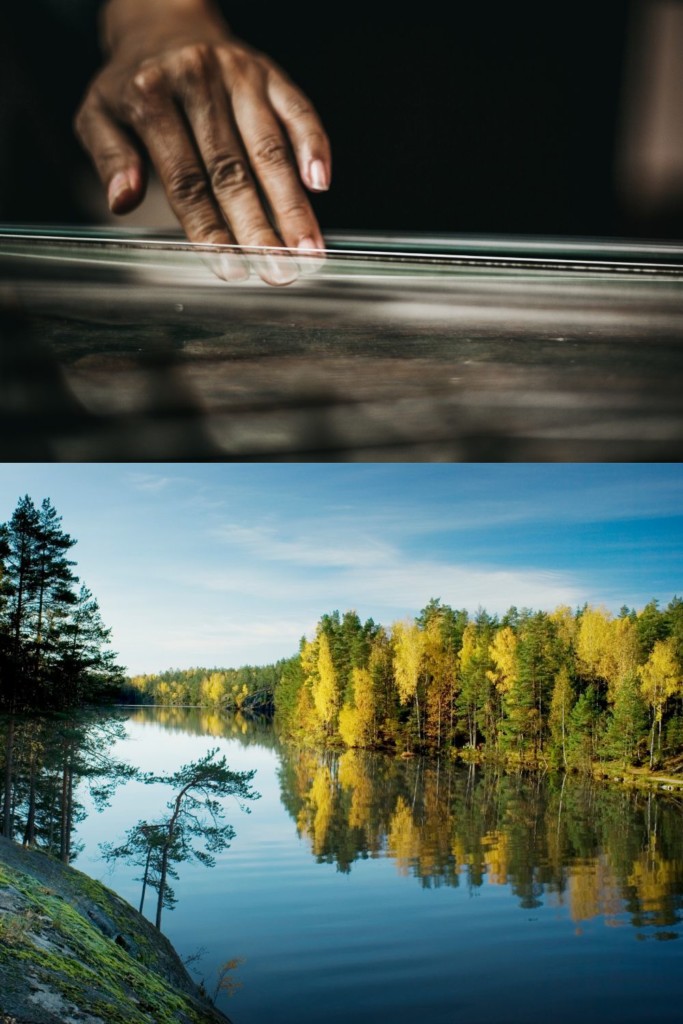
Structure of Kalevala
The Kalevala is structured as a series of poems, ballads, and songs. Each canto comprises several verses, and the verses are grouped based on their content and themes.
The Kalevala is written in trochaic tetrameter, a type of poetic meter consisting of four stressed syllables per line. The singers would also mostly follow the same form. Here is an example (verses 221 to 232 of song forty) with a translation from Wikipedia:
| Vaka vanha Väinämöinen itse tuon sanoiksi virkki: “Näistäpä toki tulisi kalanluinen kanteloinen, kun oisi osoajata, soiton luisen laatijata.” Kun ei toista tullutkana, ei ollut osoajata, soiton luisen laatijata, vaka vanha Väinämöinen itse loihe laatijaksi, tekijäksi teentelihe. | Väinämöinen, old and steadfast, Answered in the words which follow: “Yet a harp might be constructed Even of the bones of fishes, If there were a skilful workman, Who could from the bones construct it.” As no craftsman there was present, And there was no skilful workman Who could make a harp of fishbones, Väinämöinen, old and steadfast, Then began the harp to fashion, And himself the work accomplished. |
Overview of Kalevala: Mythology, Meaning, and Main Characters
The Kalevala is divided into 50 cantos and consists of over 22,000 verses. It tells the story of the world’s creation, its heroes’ adventures, and the conflicts between tribes and clans. Let’s dive in and explore their fascinating world.
Kalevala mythology and creation myth
The Kalevala explores a wide range of themes, including the power of nature, the importance of family and community, the struggle between good and evil, and the search for knowledge and wisdom.
The story begins with the creation of the world: the earth is created from egg shards, and Väinämöinen is born. He brings trees and life to the world. The cover of an egg formed the sky, and the sky itself rotated around the North Star. This created a whirl that allowed souls to depart the world to Tuonela after death by crossing a river.
From there, we follow Väinämöinen and the other heroes as they learn skills, attempt impossible tasks (often to marry), cast spells, and fail their tasks which often leads to great tragedy. The heroes can sing the poems, and often Kalevala stories include some kind of lesson, such as Väinämöinen telling parents not to treat their children too harshly. Even the heroes have their flaws and often look for revenge.
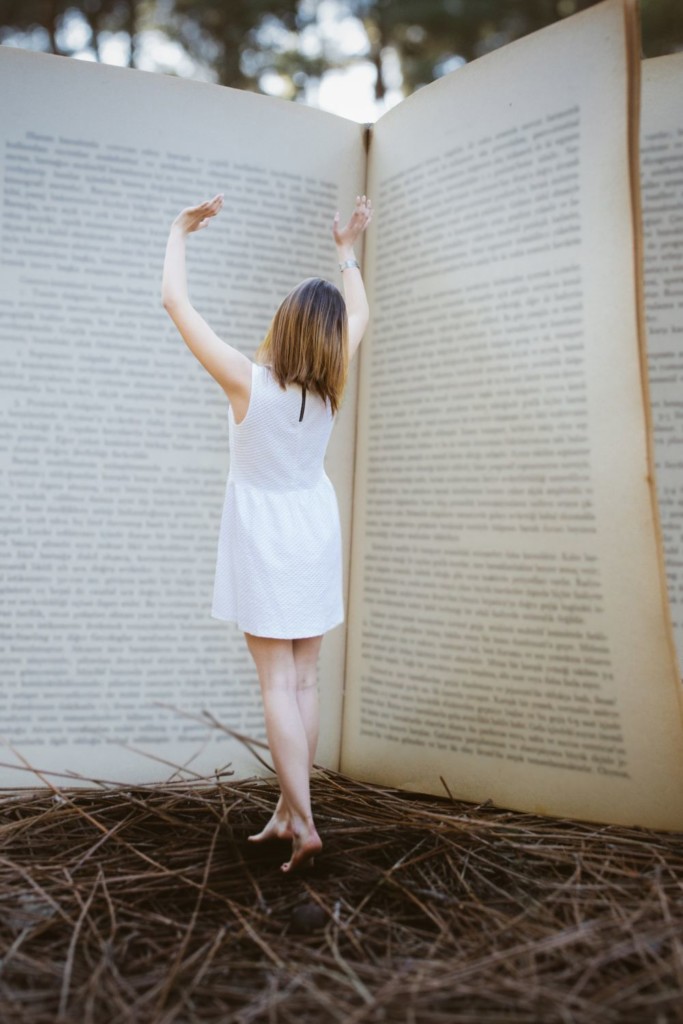
At the center of events is Sampo, a mysterious artifact that can provide its owner with good fortune and prosperity. Those who encounter this device or artifact often are affected by it somehow.
When the heroes learn of the riches the people of the north have received from Sampo, they travel to Pohjola and demand a share of the riches or to take it for themselves. In the battle, Sampo is destroyed and lost to the sea. Louhi revenges the loss, but Väinämöinen defeats her in the end.
To learn more about each character’s story, keep reading.
Main characters of Kalevala
So who are the main characters of Kalevala?
Väinämöinen: a shamanistic hero with the magical power of songs and music. While in his mother Ilmatar’s womb for 730 years while the earth is forming, Väinämöinen learns the wisdom of ages. He leads the fight against the villains of the story while looking for a wife and teaches people important lessons about how to live their lives.
Väinämöinen is finally defeated by a newborn baby who lists all his mistakes and is crowned the king of Kaleva. Väinämöinen calls for a boat and sails away, promising to return when his magic is once again needed in the world.
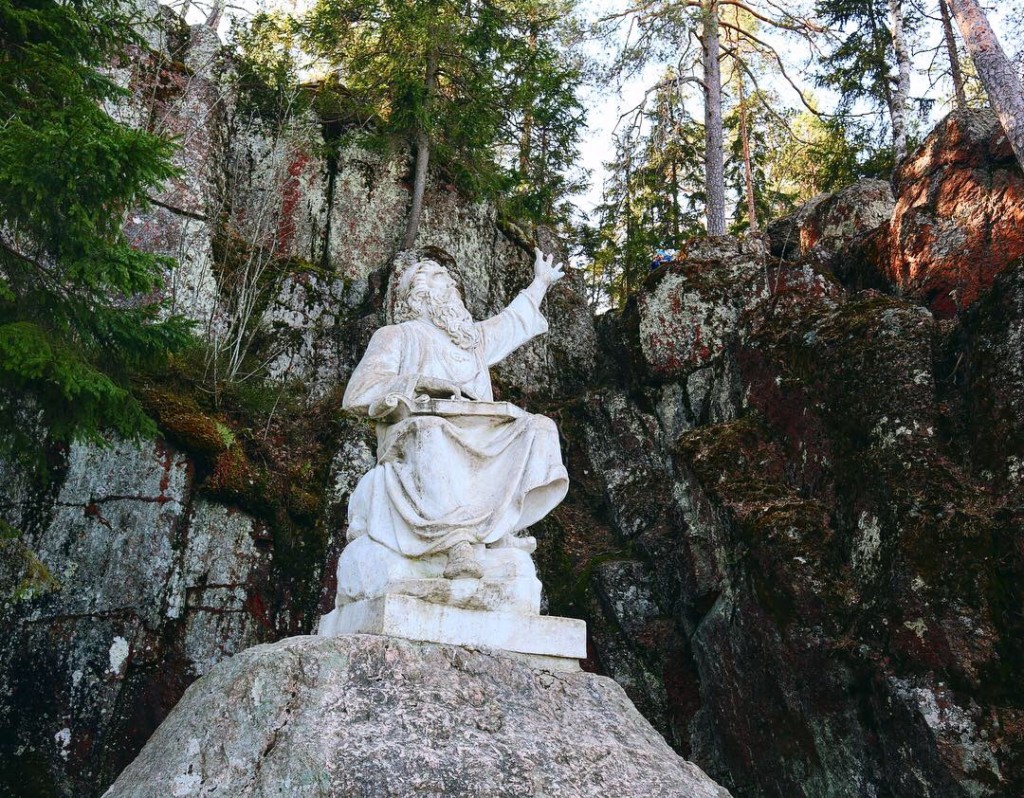
Ilmarinen: a smith who creates the Sampo, a magical artifact that brings wealth and prosperity. He does so to try to impress a daughter of Louhi, maiden of Pohjola, but she refuses to marry him.
Lemminkäinen: a reckless and impulsive hero who is killed and resurrected multiple times throughout the epic. He tries to kill the black Swan of the river of Tuonela, the underworld, to impress maiden of Pohjola, but falls in the waters instead. His mother fetches his body and asks a bee to fetch honey from the gods to bring him back to life.
Louhi: the daughter of the god of death and known as a witch queen of Pohjola (the North), a land often thought of as the place where evil things and creatures live and come from. She asks Väinämöinen to make a Sampo to allow him passage through Pohjola, a task which he tricks Ilmarinen into. She can change shape and weave enchantments and is the villain in Kalevala, opposing Väinämöinen and the other heroes. She is described as black in heart, soul, and visage and an evil genius.
Joukahainen: brother of Aino, who loses a singing contest to Väinämöinen and is drowning in a swamp when he promises the hand of Aino in marriage for saving his life. Later on, he looks for revenge.
Aino: the name invented by Lönnrot means “the only one” referring to her role as the only sister or only girl. Despite the high status of Väinämöinen, Aino doesn’t want to marry such an old man. She escapes by “drowning” or turning into a nixie and returns to taunt the grieving man as a perch.
Kullervo: a tragic hero who seeks revenge against his enemies, even as a three-month-old baby, and is only saved by his magical powers. He later realizes the people he has grown up with are the ones who have slain his family and is sold into slavery. Finally, he seduces a girl who turns out to be his sister. Both have a tragic end.
Hiisi: a mythological entity that is a trickster or demon-like. They are often found in hills and potholes, woods, water, and other ominous landscapes. Lemminkäinen is associated with Hiisi in Kalevala poems and has a sword forged by Hiisi.
Iku-Turso (the eternal Turso): His appearance is not clear, but we know that he potentially has a thousand heads or a thousand horns. Louhi calls him to defend the magical Sampo from being stolen, but he asks for his freedom from Väinämöinen, who casts a spell so he never again has to leave the depths of the ocean. That might be an excellent thing, as Iki-Turso is also known as the god of war.
The nine diseases: Sons of the blind daughter of Tuoni (Louhi’s mother), including gout, plague, colic, scab, ulcer, and cancer. Louhi sends them to fight Väinämöinen, and he beats them.
Tuonetar: The queen of the underworld offers Väinämöinen a goblet of beer that, upon closer inspection, turns out to be a disgusting poison full of lizards, poisonous snakes, and worms that would make him forget he ever existed. She catches him, but Väinämöinen takes the shape of a snake and escapes, telling people never to sin to avoid going to this horrible place.
Inspired to know which Finnish goddess or god you are? Check out the article and find out.
The women of Kalevala
The story of Kalevala has more dominant male characters, and the role of women tends to be a “virgin or witch”.
If you can read Finnish, I warmly recommend Tiina Piilola’s book about this topic called “Kalevalan Naiset”. This book and research look at the incredible women of Kalevala.
For example, Aino is not only a beautiful maiden who is nervy, on edge, and commits suicide, but her story describes the metamorphosis into who she really is and the journey of her turning from a woman into a goddess and nixie.

Significance of Finnish Kalevala
Kalevala has played a crucial role in shaping Finnish culture. The epic was instrumental in promoting the Finnish language and identity. The publication of Kalevala in the 19th century helped to ignite a sense of national pride and self-awareness among the Finnish people.
Kalevala has served as a source of inspiration for Finnish (and foreign) artists, musicians, and writers from Akseli Gallen-Kallela to Sibelius, and its themes continue to inspire today. For example, Aino, a name Lönnrot invented in the Kalevala, was the most common name given to girls in Finland in the years 2006 and 2007.
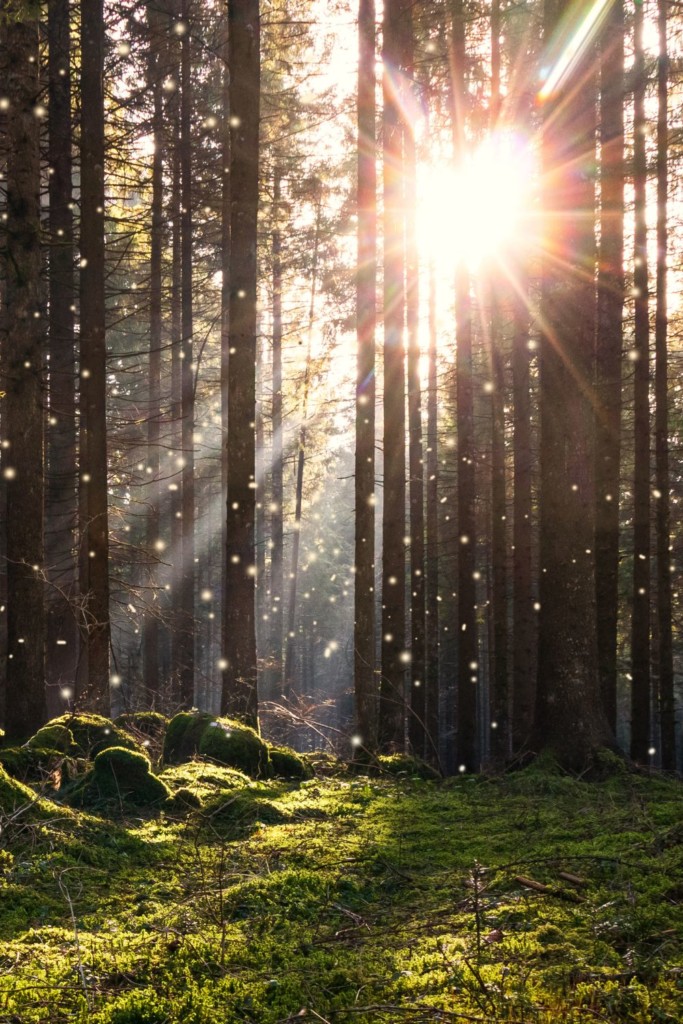
Frequently asked questions about Kalevala
Still wondering about something? I put together a few answers to the most common questions asked about Kalevala.
What is Kalevala and what is it about?
TL;DR? Here is a summary:
Kalevala is a Finnish epic poem that was compiled and written by the Finnish physician and poet Elias Lönnrot. The poem is based on Karelian and Finnish oral folklore and mythology, and it is considered a Finnish national epic. The Kalevala is a long, narrative poem consisting of 22,795 verses divided into 50 songs, or chapters.
The Kalevala tells the story of the world’s creation and the adventures of various heroes, gods, and other supernatural beings. It is set in a mythical, ancient Finland, and it describes the struggles of the people who live there.
Some of the most famous characters in the Kalevala include Väinämöinen, a powerful wizard and musician; Ilmarinen, a blacksmith who forges the Sampo, a magical device that provides prosperity; and Lemminkäinen, a young hero who journeys to the land of the dead.
The poem has themes of magic, nature, love, and heroism. The Kalevala has had a significant impact on Finnish literature and culture.
What does Kalevala mean?
Kaleva is a god and king in Finnish mythology, and Kalevala is his land the heroes live in. They are also called Kalevan pojat, Kaleva’s sons. This place has an alternative name Väinölä, which is often repeated in the poems when Kalevala is mentioned. In the original songs, Kalevala was mentioned less often.
This way of forming a name for a place is common in the Finnish language. The home of Aino might be called Ainola, home of Pentti Penttilä, and Aleksis Kivi’s seven brothers in the well-known Finnish classic Seitsemän veljestä live in Jukola.
How to pronounce Kalevala?
Kalevala is pronounced as “kah-leh-vah-lah” in Finnish.
Who wrote Kalevala?
Kalevala was compiled by Elias Lönnrot, a Finnish scholar and poet, in the 19th century. Lönnrot traveled extensively throughout Finland and Karelia, collecting folk poetry and songs from the oral tradition of the Finnish people. He then compiled and edited these materials into the epic poem that is now known as Kalevala.
There is still debate about how much Lönnrot wrote and changed as he put together the different folk poetry, but we know he sometimes created characters and combined them from different poems.
When was Kalevala written and published?
The first version of Kalevala was published in 1835 and consisted of 32 cantos. Lönnrot later expanded the poem to 50 cantos, and the final version was published in 1849. Collecting the folk poetry and songs took over 15 years and 11 trips around several different areas of Finland and Karelia.

Kalevala and Tolkien’s Lord of The Rings – what is the link?
J.R.R. Tolkien, the author of The Lord of the Rings, was greatly influenced by the Kalevala. He read the epic poem in its original Finnish language and was inspired by its themes, characters, and mythology.
Of the Finnish language, Tolkien said: “Discovering Finnish was like discovering a wine-cellar filled with bottles of amazing wine of a kind and flavour never tasted before. It quite intoxicated me.”
Tolkien was inspired to learn Finnish so he could read the poems and translate them. He ended up using Finnish as an inspiration for the languages he invented. As an undergraduate at Oxford, Tolkien wrote three texts that have been compiled as the story of Kullervo, which are said to have influenced his legendarium.
Ready to speak finnish?

Join my praised free class and speak Finnish words in 20 minutes!
Is Kalevala Finnish or Karelian?
The poems are based on Karelian and Finnish oral folklore and mythology, and it can be argued that it draws on Karelian traditions, which Lönnrot combined into a single coherent work with a more Finnish emphasis.
Kalevala is considered a Finnish literary work, but a large area, including Karelia, Finland, and Estonia, shares the traditions and the poems. Karelia was considered part of the same cultural area and a rich treasure trove of culturally important poems.
Where do the heroes of Kalevala live?
The stories of Kalevala take place in Kalevala or Väinölä, where the heroes live, and Pohjola, or the north. The heroes also visit Tuonela, the underworld.
Still intrigued? Why not get your own copy of the English version of Kalevala and learn even more about the fascinating adventures of Väinämöinen, Ilmarinen, Lemminkäinen, and others?
Self-guided tour in Finland inspired by Kalevala
If you are interested in Kalevala, what should you see in Finland? Here’s a tour that I would do. First, spend at least two days in Helsinki. Visit the National Art Gallery Ateneum. It has the most beautiful Kalevala paintings there, and those will give you so much inspiration for your road trip.
Make sure to make a visit at the National Museum of Finland, too. Its Entrance Hall has stunning Akseli Gallen-Kallela’s Kalevala-themed frescos.
Admire the Väinämöinen and Ilmarinen statues at Vanha Ylioppilastalo (Old Student House) right at the city center (Mannerheimintie 3). You can also take a stroll to see the Lönnrot monument at Lönnrotinkatu 5-7 (pictured also here on this blog).

Spend the night at the superb Finland-themed Marski by Scandic and enjoy the most delicious hotel breakfast you have ever had. Rent a car and drive to Nuuksion Taika, having earlier booked their Magic of the Kalevala program.
Then the road trip starts! Drive to Koli, where you will admire the glorious lake and forest view of Eastern Finland. Can you recognize this scenery from the paintings you saw at Ateneum? Stay the night at the lovely Break Sokos Hotel Koli. It’s literally just a few steps down from the iconic view places.

Continue your way to the town of Kajaani, where Elias Lönnrot lived and compiled Kaleva. In Kajaani, there’s a tiny but utterly charming museum with lots of interesting things ranging from Kalevala to folk healing. I really enjoyed this museum, and there’s not even admission. It’s free.

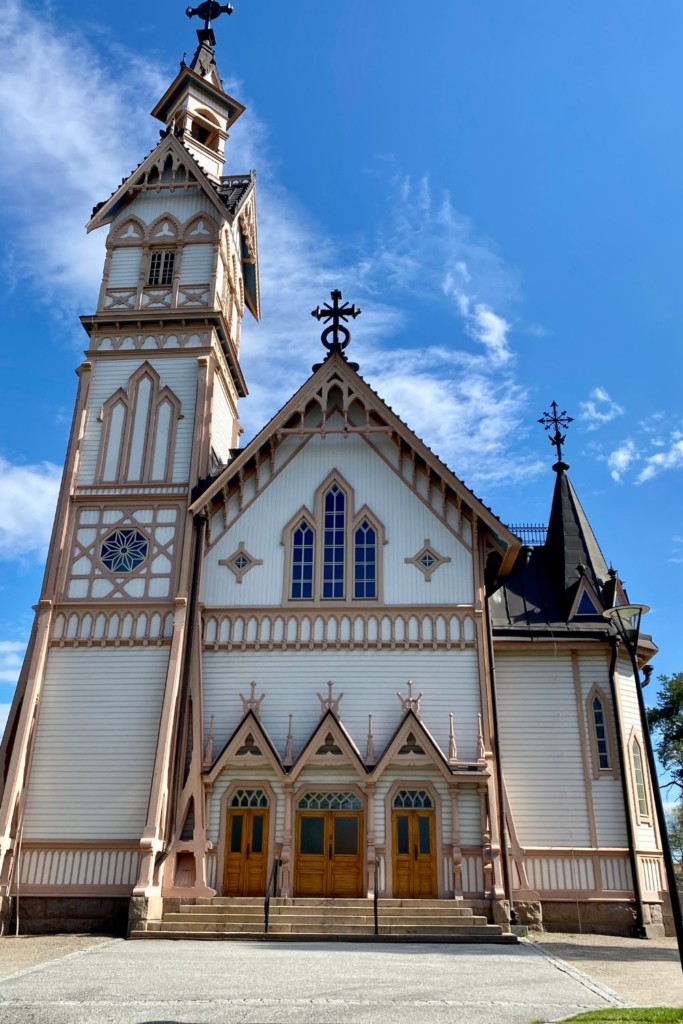
Stay at Holiday Club Katinkulta in nearby Vuokatti to enjoy spa moments, an authentic smoke sauna, and cold and warm dips.
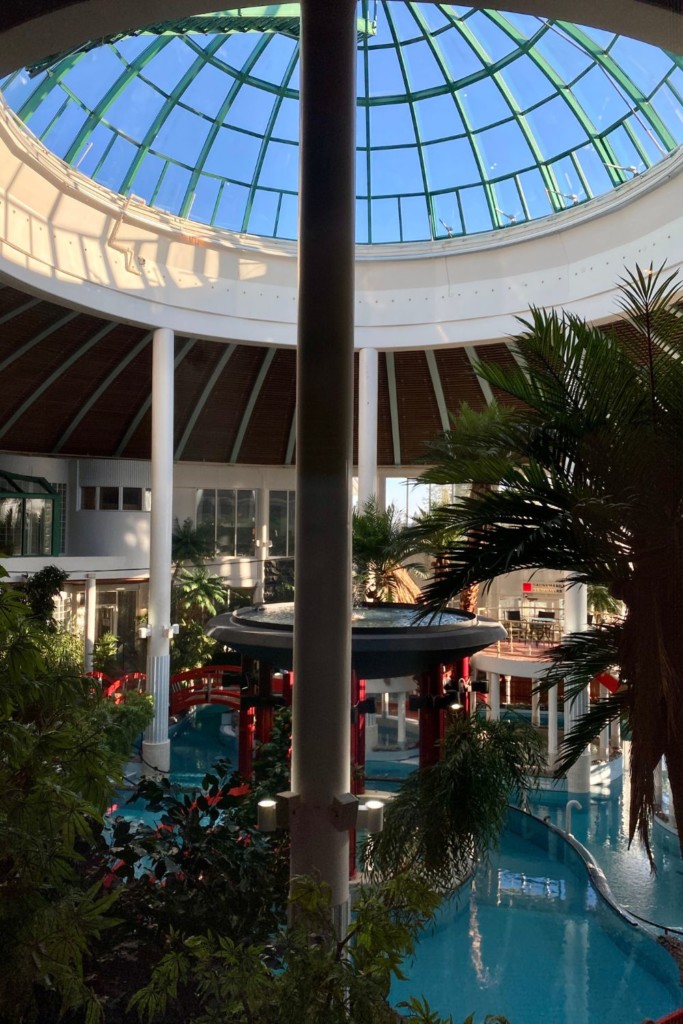
Want to do a longer road trip? Continue to the Kuusamo area and visit Oulanka National Park.
For Kalevala fans going to Kuusamo area, I would warmly recommend staying at Iisakki Village, as their old log farmhouse courtyard is the perfect fit for the experience. They also have really cool glass villas that are stunning in any season.
I really hope you enjoyed this blog! What more would you like to know about Kalevala? Let me know in the comments below!
And, if you would like to read more about Finnish culture, here are some articles that will help you do just that:
30+ Famous Finnish Sayings that Will Inspire You
Finnish Culture: Discovering Everything You Need to Know
100+ Unique Finnish names and their meanings
References:
https://blog.oup.com/2013/02/metre-alliteration-kalevala-finland/
https://journal.oraltradition.org/wp-content/uploads/files/articles/15ii/5_siikala.pdf
https://en.wikipedia.org/wiki/Kalevala
https://library.stonybrook.edu/2019/12/10/j-r-r-tolkien-and-the-kalevala/
https://matkallakalevalaan.finlit.fi/kalevala-monta/kenen-kalevala


Beth Crona
Sunday 18th of February 2024
I never thought about it that way before, what an interesting perspective.
Varpu
Monday 4th of March 2024
Thank you! Glad that you discovered a new perspective!
Netta
Wednesday 10th of May 2023
Terve Varpu, Awesome blog and content (as always...). The Kalevala is in my heart, and has been for quite a few years. Luckily, I managed to get amazing copies of it in suomi, englanti and heprea, and it has been amazing going through all of them. The undeniable connection to Tolkein makes it all the more fascinating, as he is one of my absolute favorites. Regarding the road trip idea (which is totally awesome!), if I may offer one more suggestion - the Kalevala museum in Kuhmo is incredible, and has the first edition ever published. Looking at it literally brought tears to my eyes. Also, the staff at the museum is one of a kind in terms of knowledge and kindness.
Kiitos sulle blogista, oli tosi hauskaa ja inspiroivaa lukea.
♡ Netta.
Jimmy
Sunday 7th of May 2023
There is a Kalevala Township in Northern Minnesota which also formerly had a school which many decendants of Finnish immigrants attended.
I am a member of the Knights of Kaleva, Pohjalaisen Maja #25, since 1981 and the Knight who sponsored me, Bobby Nyrhinen, just passed away this week at age 93.
In case any of his relatives in Finland are reading.
Jimmy Saranpaa